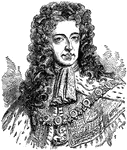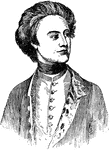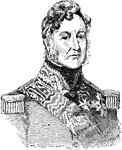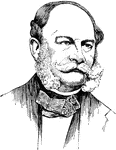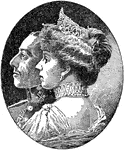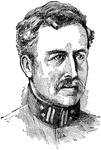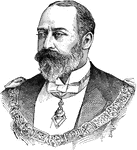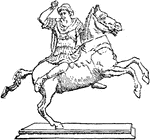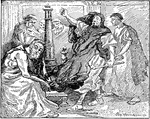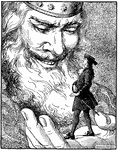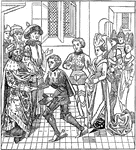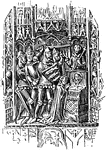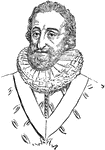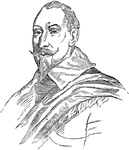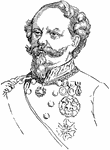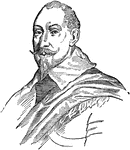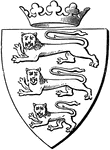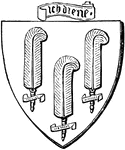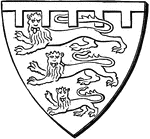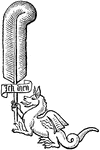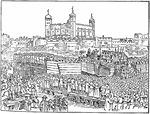
Execution of the Earl of Strafford
King Charles I signed a death warrant against Thomas Wentworth, the Earl of Strafford, after Parliament…

Silver Crown of Charles II
The silver crown coin of Charles II, who was the King of England between 1649 and 1651.
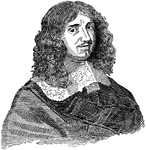
Jean-Baptiste Colbert
The French minister of finance from 1665 to 1683 under King Louis XIV. He brought the economy back from…

Medal of Louis XIV
"Commemorates the revocation of the Edict of Nantes. The obverse bears a representation of 'Louis the…
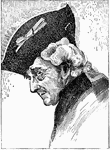
Frederick the Great
Also known as Frederick II of Prussia. He reigned from 1740 to 1786 and was a proponent of enlightened…
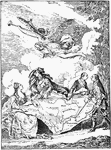
The Partition of Poland
"A contemporary cartoon which represents Catherine II, Joseph II, and Frederick II pointing out on the…
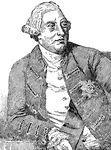
George III
The King of Great Britain and King of Ireland until their union in 1801. He continued his reign over…

The Lion of Lucerne
"It represents a dying lion, which, pierced by a lance, still guards with its paw the Bourbon lilies.…
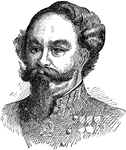
Victor Emmanuel II
The King of Piedmont, Savoy, and Sardinia from 1849 to 1861. In 1861, he assumed the title King of Italy,…

The Lion's Vengeance on the Bengal Tiger
"A cartoon by Sir John Tenniel which appeared in the English journal Punch for August 22, 1857."—Webster,…

The Victoria Cross
"Established in 1856 for acts of bravery in battle. It is a bronze Maltese cross with the royal crest…
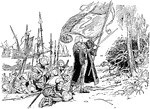
Columbus Claiming the Land
"Columbus taking possession of the land in the name of King Ferdinand and Queen Isabella."—GOrdy,…
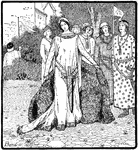
The Damsel Let Fall Her Mantle
In the story of Balin and Balan, the image depicts the damsel removing her mantle in front of King Arthur…

A Viking Ship
"It was the custom of Northmen to bury their dead sea king near the sea in his ship and over the spot…
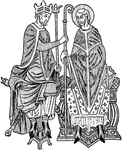
Investiture
"Investiture of a bishop by a king through the giving of the crosier, or pastoral staff."—Myers, 1905

The Electors' Seat
"This structure stands on the banks of the Rhine near Coblenz. On the top are stone seats where the…
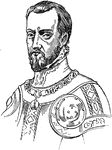
Philip II
The King of Spain from 1556 to 1598, and King of England while married to Mary I from 1554 to 1558.

Proclamation
"Proclamation of King William as Emperor of Germany at Versailles, January, 1871."—Myers, 1905

Napoleon Returning to France
"Not made on the spot but probably presenting approximately the king of equipage in which Napoleon traveled.…

The Moabite Stone
"Found in 1868 at Dîbân, east of the Dead Sea. The monument records the victory of Mesha,…

The Great Pyramid of Giza
"The pyramid when completed had a height of 481 feet. It is now 451 feet high. Its base covers 13 acres.…

The Great Sphinx
"This colossal figure, human-headed and lion-bodied, is hewn from the natural rock. The body is about…

The Cylinder of Sennacherib
"A six-sided cylinder of terra-cotta found at Ninevah. It contains a record of eight years of Sennacherib's…

Tomb of Cyrus the Great
"The mausoleum is built of immense marble blocks, joined together without cement. Its total height,…
An Assyrian Statue
"The king, a rude heroic figure, stands upright before the god. He holds a club in the left hand, in…
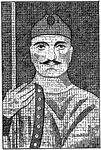
Charlemagne
The King of the Franks from 768 and the Emperor of the Romans from 800 until his death in 814.
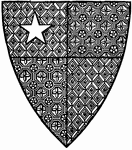
Shield of Robert de Vere
The heraldic shield of Robert de Vere, close advisor of King Richard II of England.
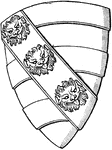
Heraldic Shield with a Lion's Face
The shield of a knight of the time of Edward II. The lion's face is a common charge in heraldry.

Eagle
The heraldic charge of the eagle is one of the earliest charges. It holds the same rank that the lion…

